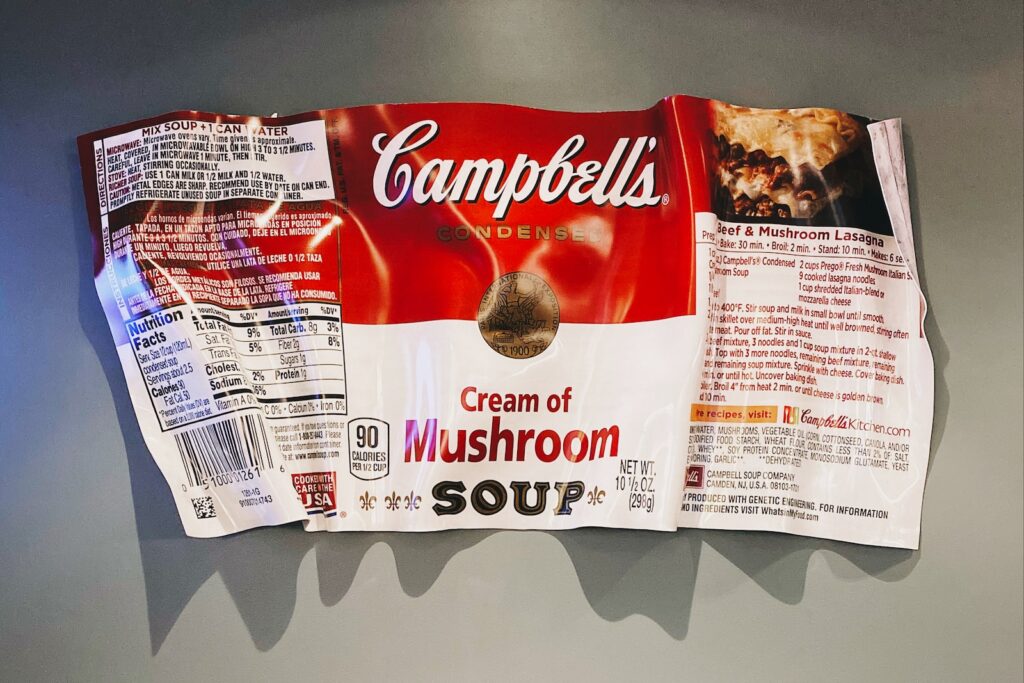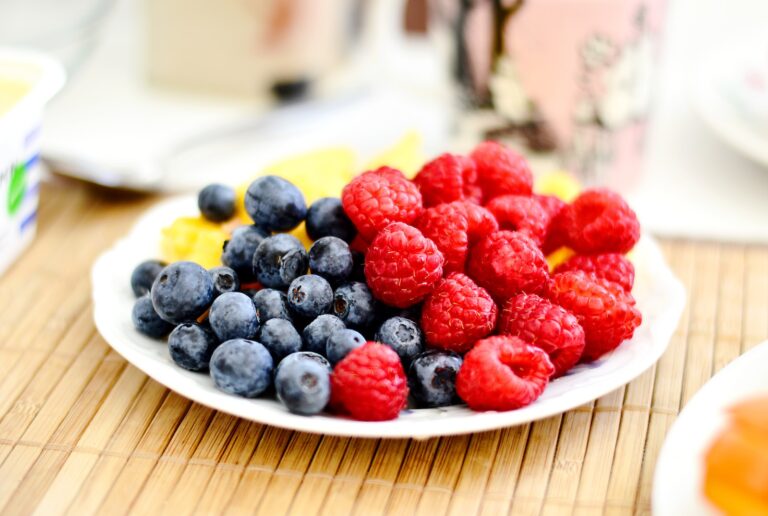Understanding Food Labels: Making Informed Choices
Have you ever found yourself staring at a food label, wondering what all those strange-sounding ingredients actually mean? Or maybe you’ve tried to decipher the confusing jargon surrounding “organic” and “non-GMO” products, only to come away feeling more overwhelmed than informed.
Fear not – in this post, we’re going to break down everything you need to know about food labels so that you can make empowered choices about what you put in your body. From decoding nutrition facts to understanding certifications and claims, let’s dive into the world of labeling and demystify the world of grocery shopping!
What are food labels?

Food labels can be bewildering, but with a little knowledge about what’s on the label and how it’s been processed, you can make healthier choices for yourself and your family. Here are some tips for understanding food labels:
- Look at the ingredients. The first thing you’ll want to look at on a food label is the list of ingredients. Make sure that all of the ingredients are things that your body needs (like fruits and vegetables), and that there aren’t any harmful additives or processed chemicals in them.
- Read the nutrition facts panel. This will give you information about how many calories, carbs, grams of protein, etc., are in a given serving of food. And remember to factor in whether or not that serving includes added sugar or sodium!
- Check the allergy alerts section. If a product contains allergens (like gluten or dairy), this section will list those allergens right near the start of the ingredient list.
- Watch out for words like “healthy,” “natural,” and ” gluten-free.” These words can mean different things depending on who is using them and what they mean By law, food must be labeled according to its nutrient content rather than its marketing claims—so if an item says it’s healthy but has high amounts of sugar or saturated fat in it, it won’t meet health guidelines regardless of whether it’s labeled natural or not .
The Nutrition Facts Label
The Nutrition Facts Label is a key tool for determining the amount of carbohydrate, fat, and fiber in foods. It provides information about how many calories are in a product and the percentage of those calories from carbohydrates, fats, and proteins. The label also lists the amount of sugar and sodium.
Food manufacturers are required to list all nutrients on the Nutrition Facts Label. The exceptions are vitamins and minerals. Vitamins and minerals must be listed as part of the Total Daily Value (TDV). The TDV reflects the combined percent daily values of several nutrients: calcium, magnesium, iron, potassium, sodium, vitamin A, vitamin C, B6, folate (vitamin B9), thiamin mononitrate (vitamin B1), niacinamide (vitamin B3), riboflavin (vitamin B2), vitamin D, vitamin E. For example, one cup of cooked oatmeal has 4 g of total carb., 2 g of total fat., and 2 g of dietary fiber. That means that 3/4ths or 3 out of every 4 gram is from carbs., 1/4th or 1 out of every 4 gram is from fats., and 1/8th or 1% is from dietary fiber.
The Allergens List
Background:
Food labels are a way for manufacturers to communicate important information about the ingredients and nutrition of their products. However, these labels can also be a source of confusion for some consumers who don’t know what all the ingredients are.
There are numerous food allergens that can cause an adverse reaction in some people. Some of the most common allergens include dairy products (milk, cheese, yogurt), peanuts, tree nuts (almonds, Brazil nuts, cashews), fish (salmon, tuna, shrimp), soy products (soy sauce, edamame beans), wheat and other gluten-containing grains.
It is important to be aware of food allergens if you are susceptible to an adverse reaction to them. If you have any questions about which foods might contain an allergen that you are concerned about, it is best to speak with a health care professional.
The Carbohydrates List
Food labels can be confusing, and it’s important to be aware of the different types of carbohydrates so that you can make informed choices. Understanding the different types of carbohydrates can help you avoid unnecessary intake of empty calories, and help you stay healthy throughout your life. Here are the four main types of carbohydrates:
Fiber Carbohydrates: These are found in vegetables, fruits, beans, whole grains, and nuts. Fiber is important for keeping your gut health in good condition and promoting regularity. You don’t need to worry about fiber carbohydrate percentages on food labels since they’re included in Over all Per Serving figures.
Starch Carbohydrates: These include potatoes, breads, pasta, couscous, cereals, rice and other grains. They provide energy and are essential for maintaining a healthy weight. Starch carbohydrate percentages aren’t always listed on food labels but they are usually included in Total Carbohydrate figures.
Sugar Alcohols: These include maltitol, xylitol and erythritol which are all sugar alcohols that have minimal impact on blood sugar levels compared to other forms of sugar like glucose or fructose. Some people don’t consider them to be a true form of carbohydrate as they provide few nutrients other than calories and grams of sugar per serving.
The Sugars List
If you’re like most people, you may be woefully unaware of the true contents of the foods you eat. In fact, it’s probable that many of the products in your pantry and fridge are mislabeled—with ingredients hidden in unorthodox places (like filler chemicals in bread or sugar alcohols in salad dressings). And that’s hardly unique to America: In Europe, Australians, and even Japan, food labels can be downright confusing.
But don’t fret: Knowing what’s actually in your food is crucial if you want to avoid toxins and unhealthy junk. Here are few ways to start decoding food labels:
- Look for recognizable brand names. Obviously, big brands tend to put more money into advertising their products than small ones, so they’re likely to have better-quality ingredients. But there’s no need to break the bank just because your groceries come from a well-known name; smaller chains also often carry great quality products.
- Check serving sizes. Many items labeled as “handed out” or “served whole” contain far more calories than indicated on their packaging. Be suspicious of anything larger than answer size unless it’s labeled as such (or accompanied by a calorie count). For example, bottled water typically contains about 20 ounces (500 calories), but 24-ounce bottles can contain up to 400 calories!
The Sodium List
The sodium list is a helpful tool when making informed choices about food. The list includes the sodium content of various types of foods grouped by food type. This allows consumers to get an idea of how much salt they are eating without having to read through long lists of individual ingredients.
To make the most of this information, it is important to understand what each food group means. The first column indicates the sodium content in milligrams per serving. The second column breaks down the sodium content by vegetable, fruit, and meat categories. The third column breaks down the sodium content by type of bread product: whole grain, white bread, and enriched bread. The fourth column provides guidance on how much salt to consume daily based on your age and sex.
When looking at the sodium list, it is important to take into account all four columns as they provide different information on how much salt to consume daily. For example, a person who eats mostly enriched bread might not need as much salt as someone who eats mostly white bread because enriched bread typically contains more nutrients and fiber than whitebread does. Similarly, pregnant women should watch their intake of salt especially since high levels of salt during pregnancy can lead to premature birth or even child development issues such as ADHD or autism spectrum disorder later in life.
The Protein List
When it comes to food labels, it is important to be aware of which foods contain protein and which don’t. Some of the best sources of protein include fresh fruits and vegetables, legumes, eggs, dairy products, and meat. Protein is essential for both physical and emotional health, so it is important to make sure you are getting enough each day. Here are more details on the different types of proteins:
Animal-based proteins include beef, lamb, poultry, fish, and pork. These proteins are high in saturated fat and cholesterol. Many people choose to avoid animal-based proteins because they believe these foods are unhealthy. However, there are healthy ways to include animal-based proteins in your diet. For example, some people enjoy eating chicken prenatal style with skin on because the skin contains less saturated fat and cholesterol than a bird cut up into pieces.
Whey proteins are a type of animal-based protein that is quickly digested and provides many essential nutrients including leucine (a crucial amino acid), valine (another essential amino acid), threonine (a muscle builder), methionine (an antioxidant), as well as antioxidants like vitamins C and E. Whey protein creatine supplements have become very popular over the last few years because they help improve strength performance during various activities like weightlifting or CrossFit workouts.
The Trans Fatty Acids List
Food labels can be confusing, especially when it comes to labeling trans fats. Here is a list of all the trans fats and what they are:
- Trans fat: This type of fat is found in processed foods like soups and fried foods. It’s most often made from oils that have been treated with a chemical to make them solid at room temperature.
- Hydrogenated oil: This type of oil contains hydrogen atoms that have been added to make it hard for the body to break down.
- Polyunsaturated fat: These fats come from plant-based sources like nuts, seeds, and vegetable oils. They are good for your heart because they have less cholesterol than saturated fats.
- Monounsaturated fat: These fats come from animal-based sources like meat, olive oil, and avocado oil. They are good for your heart because they have less cholesterol than saturated fats.
- Saturated fat: This is the most common type of fat found in food and it’s bad for your heart because it has more cholesterol than other types of fat.
Food labels and the keto diet
Looking for keto-friendly food? You’re in luck! Most major grocery stores now carry foods that are low in carbs and high in healthy fats. Here’s a look at some of the labels you’ll see on foods designed to help you follow the keto diet.
- The first thing to know is that products labeled as “keto-friendly” almost always have less carbohydrate than their regular counterparts. Look for packaged goods with under 5 grams of net carbs per serving, and be sure to read the ingredients list carefully.
- Next, find recipes tailored specifically for the keto lifestyle. Many popular cookbooks are available online or in bookstores, with creative and satisfying options that will help keep your carb intake low. Make sure you’re including healthy fats too, so you’re getting all the benefits of this restrictive diet!
Food labels can be confusing, but by following these guidelines you’ll be able to make informed choices about what to eat and stay on track with your keto goals.
Understanding food labels on a keto diet
Many people on the keto diet choose to avoid foods with labels that list carbohydrates, sugar, and grains as the first three items on the list. But what are the other food labels you should be paying attention to when following a keto diet?
Fish and seafood are high in healthy omega-3 fatty acids and low in carbs, making them an excellent source of protein on a keto diet. When shopping for seafood, look for restaurants or stores that offer Ketogenic Seafood Approved by Dr. Jonny Bowden as this will ensure you’re getting quality, fresh fish.
When it comes to dairy products, make sure to read the nutrition label to see if there are any hidden carbs lurking in there. Dairy products like full-fat yogurt can contain about 12 grams of net carbs per single serving. Be careful not to overdo it when eating dairy products though – too much can lead to weight gain. Stick to 2-3 servings per day total.
Eggs are another great option for people following a keto diet. One large egg has around 6 grams of net carbs and 5 grams of protein – perfect for breakfast or lunchtime! Again, be mindful not to overdo it with eggs – just a few per day is usually enough for most people.
Tips for making smarter food choices
There are a few things you can do to make smarter food choices when grocery shopping.
First, understand what is on the label. Nutrition labels will list the amounts of key nutrients such as fat, carbohydrates and proteins. Many brands also disclose added sugar and sodium levels. This information can help you make informed choices about what to eat.
Second, think about how the food is prepared. Some foods are better prepared fresh or cooked from scratch, while others may be healthier when purchased processed or pre-made. Read the ingredients list to see which options fit your dietary needs and lifestyle.
Third, consider what meals ideas would be served with the groceries you plan to buy. Planning ahead can help you save time and money while still eating healthy foods. For instance, if there is a dish you regularly enjoy that uses high-fat ingredients, try substituting healthier alternatives for those items when cooking at home.
Fourth, browse through food blogs for recipes that use cleaner and healthier ingredients – oftentimes these recipes are more affordable than traditional favorites as well.
Always keep in mind portion sizes when consuming food; feeling full after eating smaller portions will help curb cravings and prevent overeating later on in the day or week.
Conclusion
Food labels can be confusing, but don’t worry–we’re here to help! In this article, we’ll provide you with a breakdown of the most common food labels and explain what each one means. Finally, we’ll share some tips for making informed choices about what to eat based on the ingredients and nutritional content of the foods you enjoy. Hopefully after reading this article, you will have a better understanding of how to read food labels and make healthier choices for yourself and your family. Thanks for reading!







2 Comments